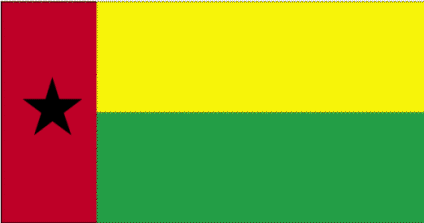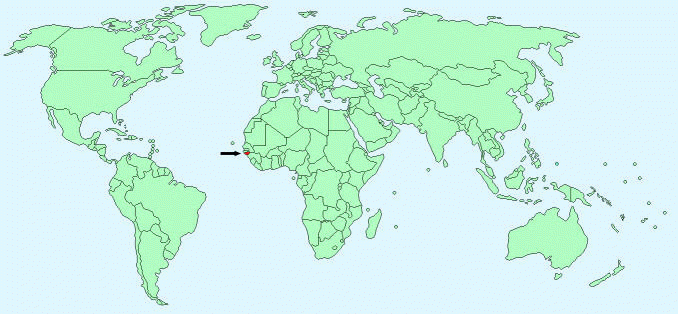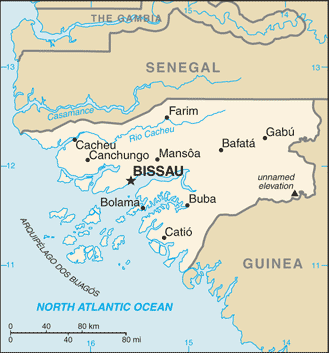Guinea-Bissau


Continent – Africa
Region – Western Africa
Size – 36,125km²
Geography – mostly low coastal plain rising to savanna in east
Language – Portuguese, Crioulo
Religion -Muslim 50%, indigenous beliefs 40%, Christian 10%
Monetary Unit – CFA-franc
Natural Resources – fish, timber, phosphates, bauxite, clay, granite, limestone, unexploited deposits of petroleum
Agriculture – rice, corn, beans, cassava (tapioca), cashew nuts, peanuts, palm kernels, cotton; timber; fish
Industry – agricultural products processing, beer, soft drinks

Neighbouring Countries – Guinea, Senegal
Population – 1,693,398 (2014 estimate)
Population Growth Rate – 1.93%
Average Life Expectancy – 49.87 years
Capital City – Bissau (423,000)
Highest Mountain – unnamed (300m)
Longest River – Rio Cacheu
Climate – tropical, 26°C to 28°C,
Yearly Rainfall – 198 cm (approx) July and August wettest seasons
Plant Life – thick jungle, rice and mangrove fields and savanna grass
Animal Life – Several species of antelope, buffalo, monkeys, and snakes
Bird Life – Flamingo, parrot, kingfisher and other bird species
Harvard Reference for this page:
Heather Y Wheeler. (2015). Guinea Bissau. Available: https://www.naturalhistoryonthenet.com/Facts_Figures/Country_Facts/guinea_Bissau.htm. Last accessed Monday, July 18, 2016
Facts and Figures Pages
